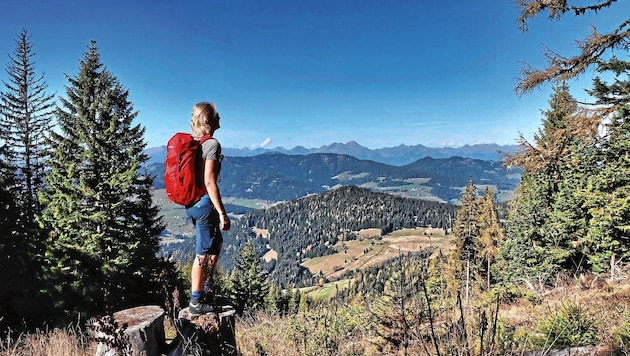Preventing injuries
Accidents are imminent: how to get up the mountain safely
Every year, around 1,600 people have accidents while hiking in the Austrian Alps, over 100 of which are fatal. Slipping, followed by twisting an ankle and tripping, is one of the most common causes of injuries on the mountain when falls occur. The latter now account for around half of all hiking accidents.
In addition to cardiovascular diseases and getting lost, overestimating one's own abilities and exhaustion are among the greatest dangers. Therefore, don't speed up to overtake others or try to reach a summit at all costs, even though the weather advises you to stop. Climb dangerous sections carefully and cautiously. If you are walking in a group, always take the weakest participant into consideration.
Obtain a weather report
The weather can change suddenly in the mountains. Rain and snow can make even easy paths slippery. In thunderstorms, leave exposed areas and avoid wire rope protection. If it is foggy, stop and wait until visibility improves so that you can reorient yourself.
Choose the right equipment
Choose the right clothing and good shoes with sturdy soles for hiking. It is best to test your hiking boots in the store with thick socks to protect your feet. If possible on an inclined plate. Then you will notice whether your foot slips forward in the shoe when walking downhill. For colder weather, you should also have a light sweater and rain protection with you.
Caution, overload!
Exertion and "thin air" can push the body to its limits. Exhaustion makes walking unsafe. Plan breaks. Never go on a mountain tour alone! You should also always have a hiking map with you so that you don't get lost.
This belongs in your rucksack
In addition to rain protection, a change of T-shirt and a sweater, your rucksack should also contain the following items: sufficient drinking supplies (refill bottles at wells along the way), a small first aid kit with bandages, plasters, scissors, an emergency blanket and personal medication. As grazes and strains are among the most common hiking injuries, you can also pack ointments or cooling sports gels.
Should an injury occur, the so-called P.E.C.H. rule applies: rest, ice, compression, elevation.
- P: Rest - The injured body part should be immobilized immediately. Avoid further strain and movement so as not to aggravate the injury.
E: Ice - Cool the injured area with ice or a cold compress. This helps to relieve swelling and pain. However, wrap the ice in a cloth and do not place it directly on the skin to avoid frostbite.
C: Compression - Apply compression or pressure bandage to minimize swelling and regulate circulation.
H: Elevation - The injured body part should be elevated, ideally above heart level, to reduce blood flow and reduce swelling.
The P.E.C.H. rule should be applied in the first few hours after an injury to promote healing and reduce pain. If the injury is serious, always seek medical attention.












Kommentare
Willkommen in unserer Community! Eingehende Beiträge werden geprüft und anschließend veröffentlicht. Bitte achten Sie auf Einhaltung unserer Netiquette und AGB. Für ausführliche Diskussionen steht Ihnen ebenso das krone.at-Forum zur Verfügung. Hier können Sie das Community-Team via unserer Melde- und Abhilfestelle kontaktieren.
User-Beiträge geben nicht notwendigerweise die Meinung des Betreibers/der Redaktion bzw. von Krone Multimedia (KMM) wieder. In diesem Sinne distanziert sich die Redaktion/der Betreiber von den Inhalten in diesem Diskussionsforum. KMM behält sich insbesondere vor, gegen geltendes Recht verstoßende, den guten Sitten oder der Netiquette widersprechende bzw. dem Ansehen von KMM zuwiderlaufende Beiträge zu löschen, diesbezüglichen Schadenersatz gegenüber dem betreffenden User geltend zu machen, die Nutzer-Daten zu Zwecken der Rechtsverfolgung zu verwenden und strafrechtlich relevante Beiträge zur Anzeige zu bringen (siehe auch AGB). Hier können Sie das Community-Team via unserer Melde- und Abhilfestelle kontaktieren.